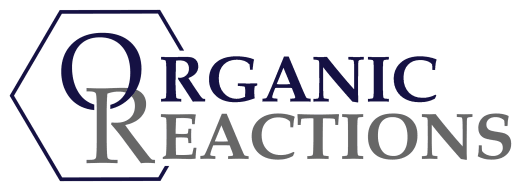Organic Reactions® is a comprehensive reference work that contains authoritative, critical reviews of many important synthetic reactions.
In addition to detailed discussions of the mechanism, scope, and limitations of reactions, OR chapters contain a tabular survey of all known examples of organic reactions to date. Exhaustive synthesis and analysis of primary literature examples sets Organic Reactions apart from comparable secondary references for organic chemistry. Here, you will find condensed versions of Organic Reactions chapters and links to full versions of the chapters. Feel free to browse the wiki reaction pages, full chapters, or type a reaction into the search box above.
Latest News
Volume 114 is Now Available
We are pleased to announce the publication of Vol. 114, with chapters on the Cloke–Wilson Rearrangement, the Kinugasa Reaction, ... [Read More]
New OR Website
You may notice a new look to the Organic Reactions Website. We are in the process of finalizing a few things and we will make a full ... [Read More]
Latest Published Chapters
Enantioselective Pictet-Spengler Reactions
Author(s): Seidel, D.
Vol: 114 Year: 2024
Vol: 114 Year: 2024
The Kinugasa Reaction
Author(s): Chmielewski, M.; Kutaszewicz, R.; Ulikowski, A.; Michalak, M.; Wołosewicz, K.; Stecko, S.; Furman, B.
Vol: 114 Year: 2024
Vol: 114 Year: 2024
The Cloke-Wilson Rearrangement
Author(s): Reyes, E.; Prieto, L.; Manzano, R.; Carrillo, L.; Uria, U.; Vicario, J. L.
Vol: 114 Year: 2024
Vol: 114 Year: 2024
Hydrozirconation of Alkynes
Author(s): Milligan, J. A.; Hammill, C. V.; Crocker, D. L.; Wipf, P.
Vol: 113 Year: 2023
Vol: 113 Year: 2023
Transition-Metal-Catalyzed Alkyl-Alkyl Cross-Coupling Reactions
Author(s): Iwasaki, T.; Kambe, N.
Vol: 113 Year: 2023
Vol: 113 Year: 2023
A Half-Century of the Ugi Reaction: Modified Variants
Author(s): Ullrich, A.; Kazmaier, U.
Vol: 112 Year: 2023
Vol: 112 Year: 2023

